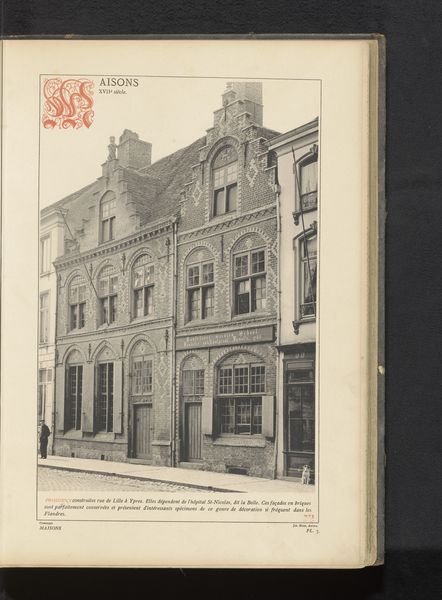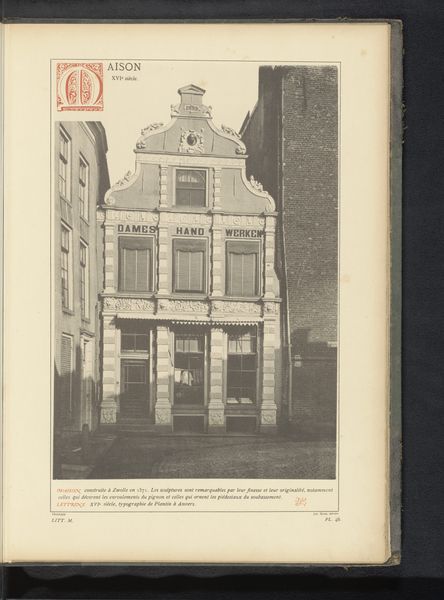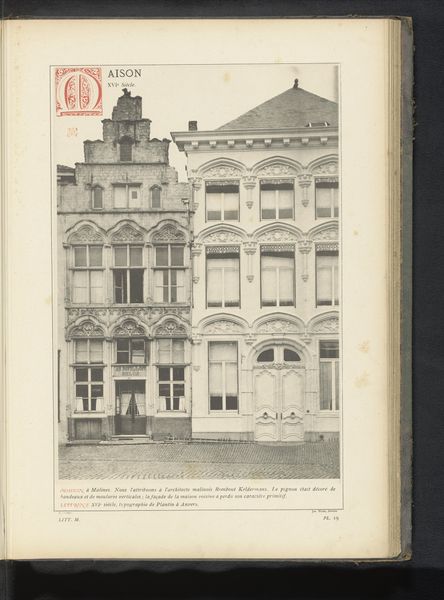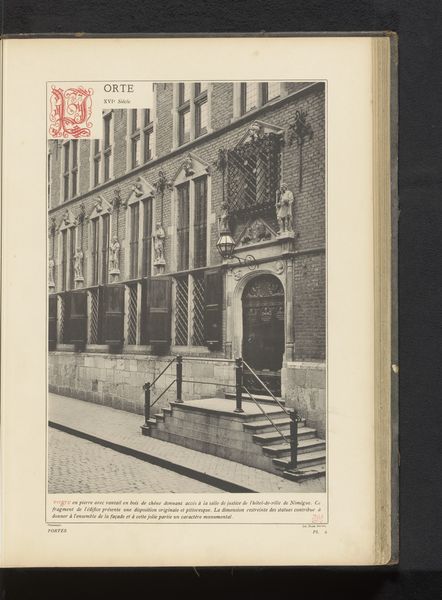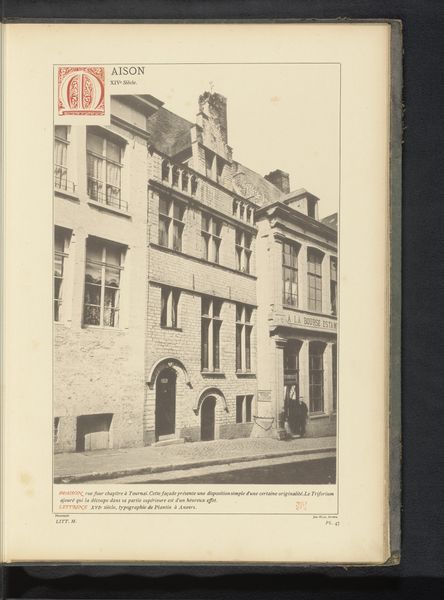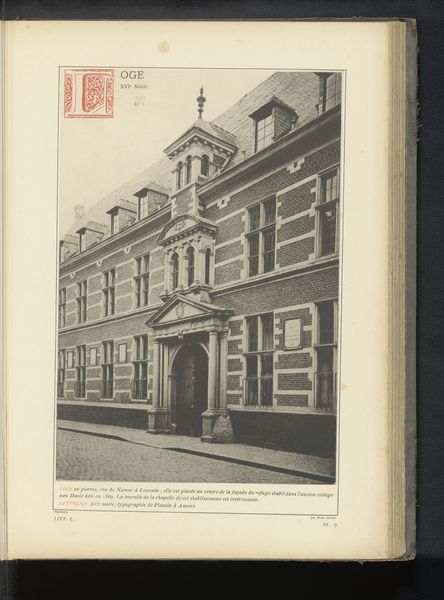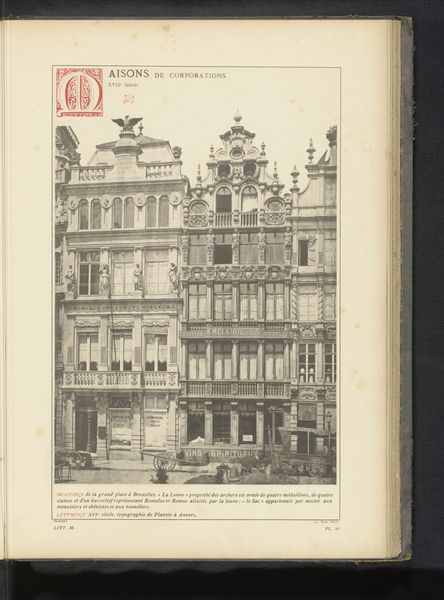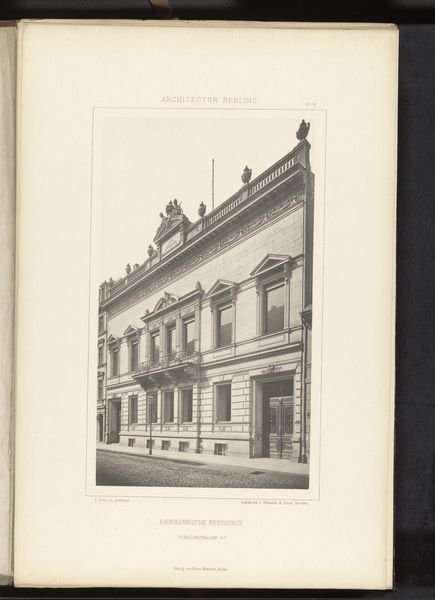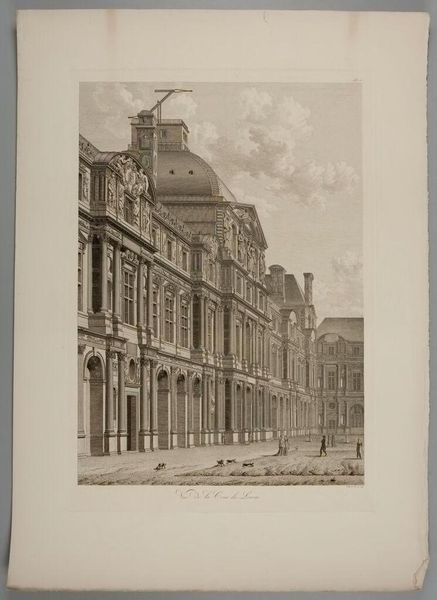
print, photography, albumen-print
# print
#
photography
#
cityscape
#
albumen-print
Dimensions: height 338 mm, width 232 mm
Copyright: Rijks Museum: Open Domain
Curator: This photograph, dating from before 1880, presents a "View of Two Houses on the Rue des Chiens in Ypres, Belgium". It's an albumen print, so we get that characteristic sepia tone. Editor: Sepia definitely sets a mood. It feels…old-world melancholy. The architecture itself is striking, those steep gables and arched windows give a real sense of height and formality, despite the narrow street. Like something out of a fairy tale that turned serious. Curator: Indeed. The photographer has skillfully employed linear perspective to emphasize depth. The converging lines of the street draw the viewer's eye towards the vanishing point, structuring the composition effectively. The tonal contrasts, while subtle, delineate form and texture in the brickwork. Editor: I like how the textures come through—the roughness of the brick against the smoother window panes. It's as if you could reach out and feel the age of the buildings. It also evokes a sense of quiet, even desolation; there are no people, few details other than architecture to latch onto. It focuses your eye, doesn’t it? Curator: Precisely. The absence of human figures is not merely a lack but an aesthetic choice, directing focus purely onto the architectural forms themselves, thereby enabling an analysis of their formal properties independently of anecdotal narrative. The geometry asserts itself; arches intersect lines, surfaces engage volumes. Editor: I never considered emptiness as a subject—though here, it’s almost deafening. It makes you consider: What kind of lives unfolded behind those walls, with their elegantly draped curtains and solemn facades? I see beauty here but also a kind of stillness. Curator: Such considerations on the historical implications surrounding subject matter constitute interpretations extending well beyond the realm of pure form, and thus bear no immediate relevance within a purely structural assessment, or analysis on perspective for example. Editor: Maybe so, but without injecting imagination—or what you'd call external narratives—it’s tough for most of us to engage beyond the purely visual. What does it do, if it doesn’t stir some inner reflection? Curator: Well, reflection, precisely, arises from examining the piece and understanding its components. Editor: Perhaps our different views can enrich it then, by reflecting and combining both points of view?
Comments
No comments
Be the first to comment and join the conversation on the ultimate creative platform.


